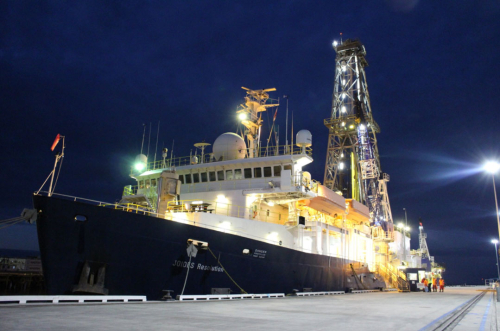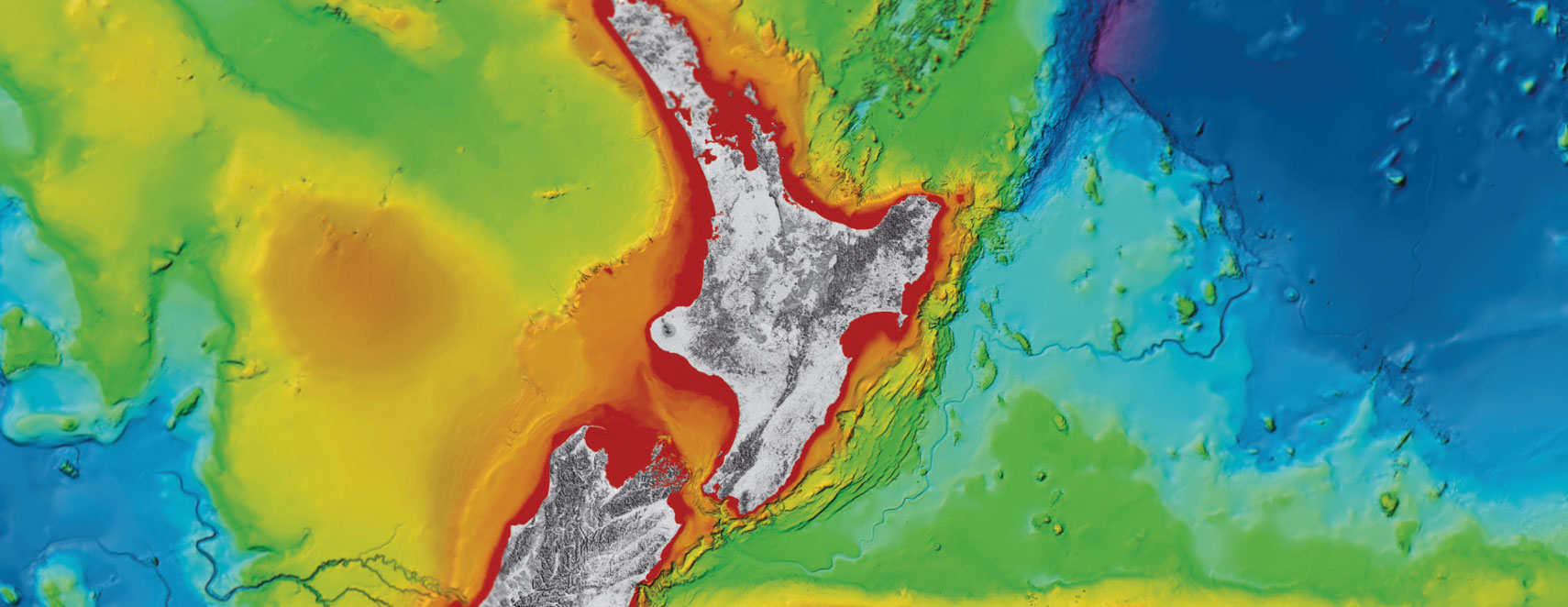
Deep-sea observatories will offer a new vision into quakes

An ambitious mission to lower two sub-seafloor observatories into the Hikurangi subduction zone east of the North Island to study New Zealand’s largest fault starts this weekend.
The expedition is jointly led by scientists from GNS Science and Pennsylvania State University and is funded by the International Ocean Discovery Program (IODP) and the US National Science Foundation.
The project will see a team of international scientists spending the next eight weeks aboard the scientific drilling ship, JOIDES Resolution, probing the seafloor east of Gisborne to find out more about New Zealand’s largest earthquake and tsunami hazard.
The Hikurangi subduction zone off the east coast of the North Island, is part of the Pacific Ring of Fire where the Pacific tectonic plate dives beneath the Australian plate.
Scientists believe the Hikurangi subduction zone is capable of generating earthquakes of more than magnitude 8. Subduction zone earthquakes can produce large tsunamis because there are large and rapid displacements of the seafloor during the earthquakes.
The voyage team will collect and analyse cores from below the seabed to understand the rock properties and conditions where slow-slip events occur. Expedition co-leader, Dr Laura Wallace of GNS Science explains, “slow-slip events or slow-slip earthquakes are similar to earthquakes, because they involve more rapid than normal movement along a fault.
“However, during a slow-slip event it takes weeks to months for this fault movement to occur. This is very different from an earthquake, where fault movement occurs over a matter of seconds releasing energy suddenly.”
Slow-slip events occur at intervals of 12 to 24 months near Gisborne, at a relatively shallow depth beneath the seabed – making this region one of the best places in the world for scientists to study them.
“Slow-slip events are enigmatic because we don't yet understand the physical processes that cause faults to behave in such a way, and we don’t know very much about their relationship to large subduction zone earthquakes,” says expedition co-leader Dr Demian Saffer, of Pennsylvania State University.
The Kaikōura earthquake of 2016 triggered a large slow-slip event off the east coast covering an area of more than 15,000 square km. The slow-slip event started in the region of the planned drilling east of Gisborne, so the results from this research should shed new light on why this occurred.
Investigating why and where slow-slip events happen is a key missing link in understanding how faults work. Wallace believes that “slow-slip events also have great potential to improve our ability to forecast earthquakes”.
A major aim of the voyage is Installing two borehole observatories into pre-drilled holes 500m below the seabed. This will be the first time that such observatories have been installed in New Zealand waters. It brings brand new monitoring capability to New Zealand, which may help pave the way for offshore instrumentation needed for earthquake and tsunami early warning systems.
The observatories contain high-tech measuring and monitoring equipment inside their steel casing and will remain under the seafloor for five to ten years. They will collect information on how the rocks are strained during slow-slip events, as well as changes in temperature and also fingerprint the fluids released in fault zones during tectonic activity.
One observatory will be placed into the Australian tectonic plate above the area where slow-slip events occur, and the other will be placed directly into the fault zone where the two plates meet and slide past each other.
Information gathered by the observatories will give scientists important new insights into the behaviour of slow-slip events and their relationship to great earth¬quakes along the subduction plate boundary.
Understanding the linkages between slow-slip events and devastating earthquakes and tsunamis will allow for better risk modelling and ultimately, better hazard preparation for our coastal communities.
Program director in the National Science Foundation’s Division of Ocean Sciences, which funds IODP, James Allan said: “This expedition will yield information that’s key to understanding why destructive tsunamis happen after shallow earthquakes at plate subduction zones and underwater landslides.”
New Zealand participates in IODP through a consortium of research organisations and universities in Australia and New Zealand, including GNS Science, NIWA, The University of Auckland, Victoria University of Wellington, and University of Otago. The Australia and New Zealand IODP Consortium (ANZIC) is supporting participation of New Zealand scientists and outreach officers on both expeditions. The scientific drilling vessel JOIDES Resolution is funded by the US National Science Foundation.
Disclaimers and Copyright
While every endeavour has been taken by the East Coast Lab Hikurangi Subduction Zone M9 to ensure that the information on this website is
accurate and up to date, East Coast Lab Hikurangi Subduction Zone M9 shall not be liable for any loss suffered through the use, directly or indirectly, of information on this website. Information contained has been assembled in good faith.
Some of the information available in this site is from the New Zealand Public domain and supplied by relevant
government agencies. East Coast Lab Hikurangi Subduction Zone M9 cannot accept any liability for its accuracy or content.
Portions of the information and material on this site, including data, pages, documents, online
graphics and images are protected by copyright, unless specifically notified to the contrary. Externally sourced
information or material is copyright to the respective provider.
© East Coast Lab Hikurangi Subduction Zone M9 - www.eastcoastlab.org.nz / +64 6 835 9200 / info@eastcoastlab.org.nz
